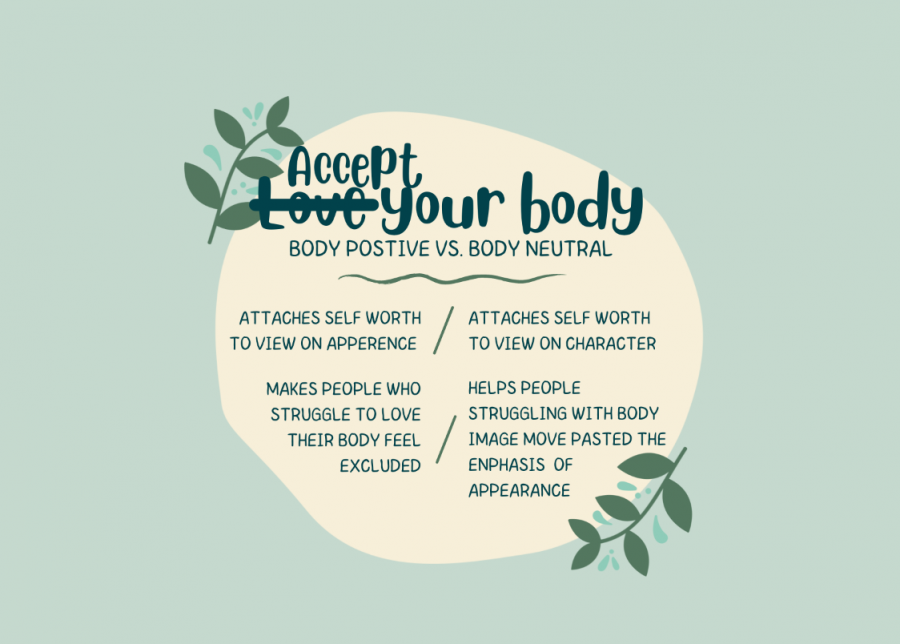Body positivity vs. body neutrality
Body positivity: not so positive
Being body neutral may be a better way for people to reach body acceptance.
Body image has been an issue for centuries and there have been many attempts to fix the on-going issue. The Body Positivity Movement is the most recent “solution”, but it has turned away from its original purposes and ideas. The movement has become so focused on appearance, and as a result, has become the antithesis of what it was once intended to stand for.
Body Positivity has become a popular movement that claims to encourage all people to love their appearance no matter what size they are. The movement started as the Fat Rights Movement in 1969. The Fat Rights Movement’s main goal was to allow fat people to become equal to thin people and for the divide, in which ways fat and thin people were treated, to be closed. When the 2000s rolled around the internet became extremely toxic towards plus sized people, fat rights activists began to form together on social media platforms such as Instagram and Tumbler. The phrase “The Body is Not An Apology,” became popularized in 2012, and plus sized liberation took over the internet. Finally, the movement turned into the Body Positivity movement that is well known today.
In 2021, the Body Positivity movement is problematic in many ways; the first being body checking. It’s not uncommon to see an internet influencer slouch down to show off their stomach rolls or point out the slightest imperfection in their body and claim it’s “Body Positivity.” The main issue with this type of media is that many times the influencers aren’t even plus size people, and they are trying to profit off a movement not even made for them. These influencers are being praised for having “body positivity” while plus sized people are being shamed for participating in the same kinds of videos. Not only is this kind of media insensitive to the movement, but it also focuses on small imperfections that the average person might not find to be a problem until it’s pointed out to them. These videos make people compare themselves to others, and are ultimately more harmful than helpful.
Another way the movement is problematic is that it is hyper focused on outward appearance rather than inward personality. People shouldn’t have to be “body positive” to accept themselves. Within body positivity, oftentimes the few plus size people who are actually celebrated within the movement are still “conventionally attractive” people. They usually have eurocentric features and fit into the beauty standards outside of their jean size. People of color, people who have disabilities and other people who don’t fit into the current beauty standards are rarely celebrated. Altogether, body positivity might not be a positive way to handle people’s acceptance of themselves.
There is a much better approach to self acceptance, as well as creating equality for all people. Body Neutrality is a movement that focuses on things that aren’t as shallow as appearance. It pleads the question: “Why must one have a positive outlook on their own appearance to find self worth?” Body positivity shoves the idea of having to feel beautiful down people’s throats, and makes people feel worthless if they can’t accept their current appearance as beautiful. Body Neutrality, on the other hand, celebrates people for who they are on the inside. Body Neutrality is all about ignoring appearance completely and celebrating intelligence, personality and what your body is capable of doing. The movement will help the internet stray away from its toxic culture of commenting on people’s appearances constantly. The goal of Body Neutrality is to focus on people’s abilities and look at outward beauty through a neutral lens. Overall, Body Neutrality could change society’s culture, and help people celebrate others for who they are as people.
The body positivity movement ultimately started with the right intentions, but with changing times, the world needs a new way to handle body image.



